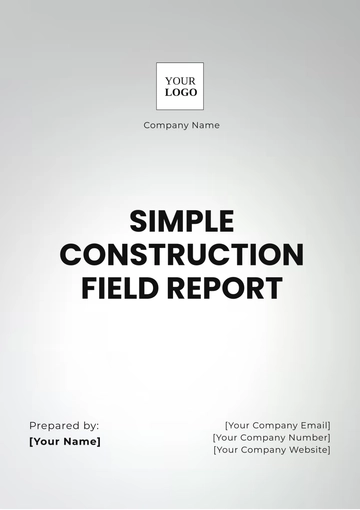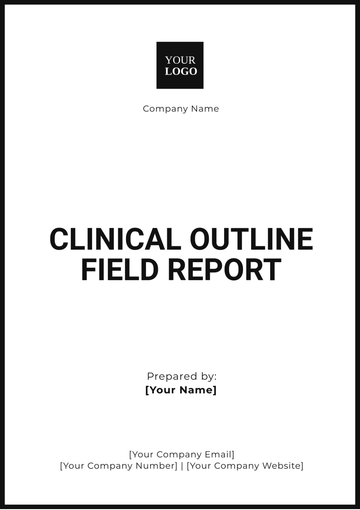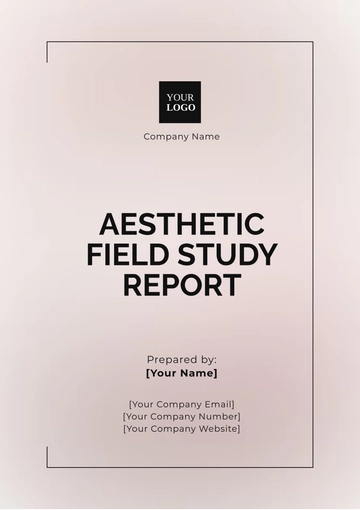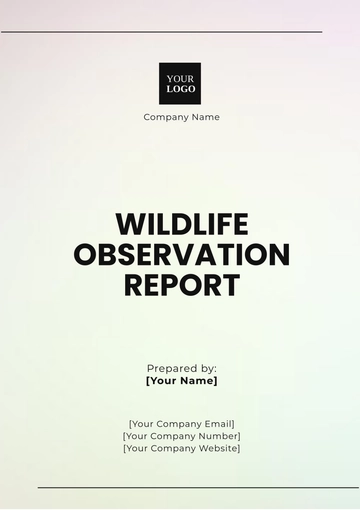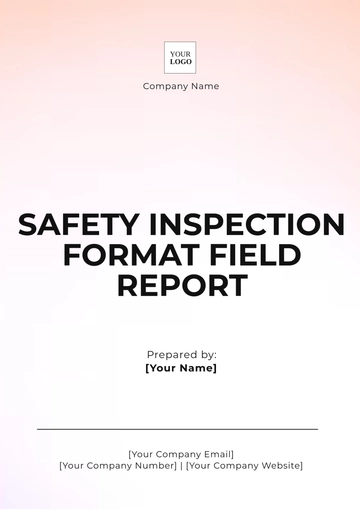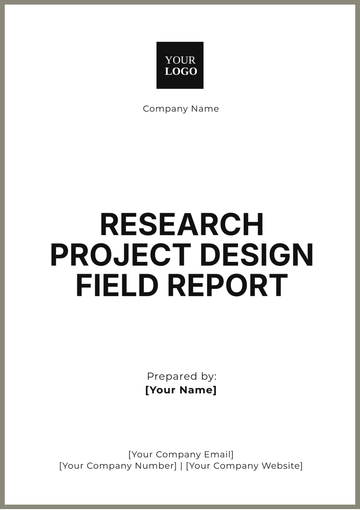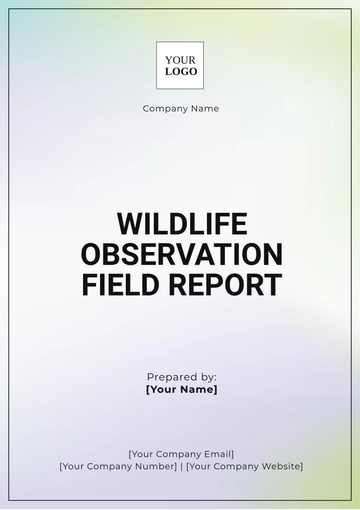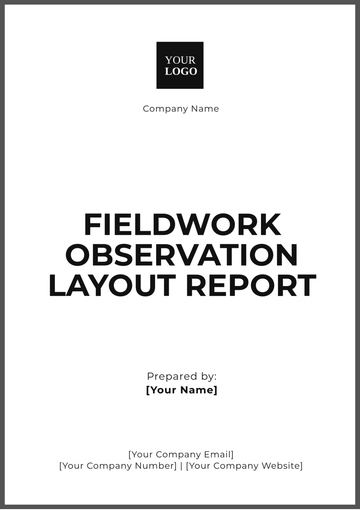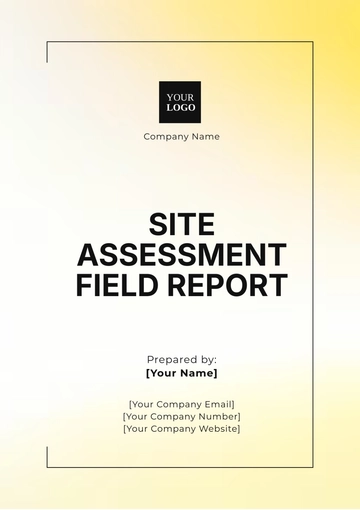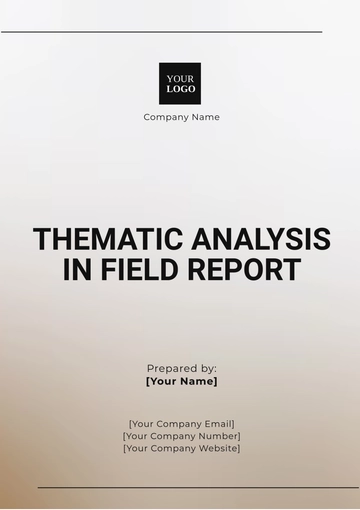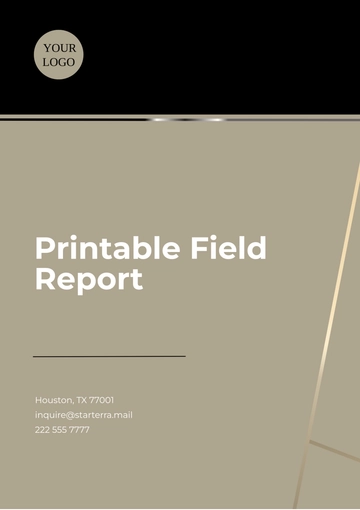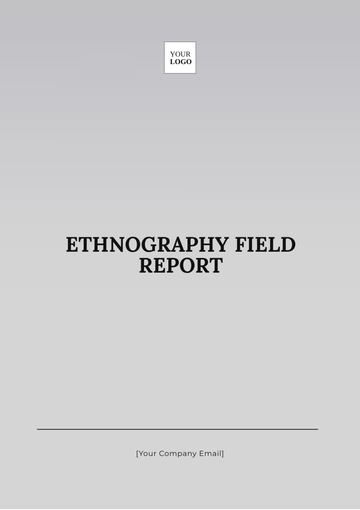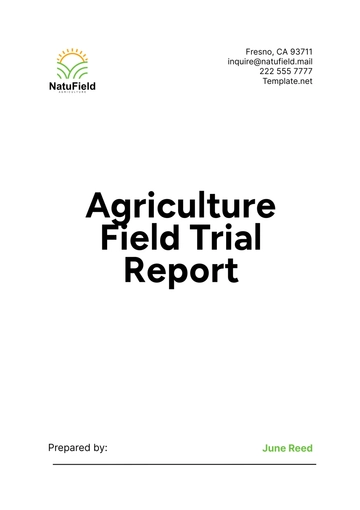Free Aesthetic Field Study Report

Title: "The Aesthetic Qualities of Urban Public Spaces in New York City"
Prepared by: [Your Name]
I. Introduction
A. Purpose and Scope
This report aims to explore and analyze the aesthetic qualities of public urban spaces in New York City, specifically focusing on the visual and sensory elements that contribute to the overall experience of these spaces. With the rapid advancement of technology, sustainability, and cultural evolution, the public spaces of New York City in 2050 and beyond offer a fascinating opportunity to study the evolving relationship between humans, nature, and urban design. The study emphasizes how design, architecture, and cultural influences shape public interactions in urban environments, in an era where innovation in materials, public art, and digital experiences has become prevalent.
B. Objectives
The primary objective of this study is to examine key aspects such as the interplay between natural and built elements, the use of color and materials, the role of public art, and the integration of smart technologies. By conducting an in-depth analysis of a select number of spaces, the report seeks to understand how these factors create an atmosphere that engages both locals and tourists, reflecting New York's identity as a global city and cultural hub in the 21st century.
II. Methodology
A. Data Collection
Field observations were conducted across five iconic public spaces in New York City, including Central Park, Bryant Park, Times Square, The High Line, and a newly developed "Green Metropolis" park in the city’s Lower East Side. Data collection involved both qualitative and quantitative methods, including:
Site Observations: Detailed visual documentation of the space, layout, design features, and human interactions. Focus was placed on how green infrastructure, sustainable building practices, and digital installations were incorporated.
Interviews: Conversations with visitors, city planners, landscape architects, and urban technologists. Perspectives from local cultural experts were also gathered to understand how public spaces reflect the city's ever-evolving identity.
Photography and Sketching: Capturing visual elements of the space through advanced drones and 360-degree cameras. Detailed sketches were produced using augmented reality tools to showcase how the spaces might evolve in the future.
Environmental Surveys: Measurement of noise levels, lighting conditions, air quality, and interaction with digital installations to understand sensory experiences in these spaces.
B. Analytical Framework
This report adopts a multi-disciplinary approach, drawing on principles from aesthetics, urban design theory, environmental psychology, cultural studies, and technological advancements in smart urban spaces. The study considers both formal and informal elements of design, focusing on how these components contribute to the sensory and emotional experiences of people in these spaces.
III. Findings and Analysis
A. Spatial Composition and Design
Public spaces in New York City in 2050 reflect a dynamic interplay between technology, nature, and design. The findings reveal the following key patterns:
Green Infrastructure and Sustainable Design:
Central Park has evolved into an eco-hub, featuring vertical gardens and energy-efficient eco-domes. Smart irrigation systems maintain the park’s greenery, while rooftop gardens contribute to the city’s climate goals.
The newly developed "Green Metropolis" park emphasizes sustainability, with green walls, solar-powered seating, and urban farming areas. The design of these spaces blends renewable energy infrastructure into the aesthetic, creating a harmonious urban environment.
Architectural Innovation:
In spaces like Bryant Park, futuristic design elements such as transparent, climate-controlled walkways and interactive, 3D-printed sculptures offer visitors a unique visual experience. These installations also adjust in real-time to weather patterns, offering different aesthetic experiences throughout the day.
Times Square, known for its bright neon lights, now incorporates holographic projections, augmented reality billboards, and interactive smart walls, elevating the area’s intensity to a surreal, immersive level.
B. Color and Material Use
The colors and materials used in New York City’s public spaces in 2050 have shifted toward more sustainable and technologically integrated solutions:
Natural and Earthy Tones:
Central Park, with its expansive green areas, now features more natural and recycled materials, with pathways made from synthetic grass and bioplastics. The colors of these materials shift subtly depending on the time of day, reflecting the changing light and enhancing the park’s connection to nature.
Tech-Infused Urban Spaces:
Times Square has become a digital canvas, with color-driven holographic projections that reflect the city's vibrancy and global cultural exchanges. The space also features interactive digital screens that change their color schemes based on user inputs, creating a highly personalized aesthetic experience.
C. Public Art and Cultural Expression
Public art plays a significant role in defining the aesthetic appeal of these spaces. The presence of sculptures, murals, digital installations, and interactive displays reflects both contemporary and historical cultural expressions:
Sculptures and Monuments:
Washington Square Park now houses digital monuments that come to life with holographic elements. Visitors can experience historical events through immersive projections and interactive storytelling sessions.
An iconic modern sculpture in Bryant Park, designed by an AI-powered algorithm, changes its form every few minutes, offering a dynamic artistic presence that evolves in real time.
Augmented Reality Art Installations:
The High Line features temporary digital art installations that blend seamlessly with the surrounding architecture, allowing viewers to experience art through AR glasses. The installations change according to the seasons, offering fresh interpretations of urban landscapes.
IV. Discussion
A. Aesthetic Experience and Human Interaction
The aesthetic quality of urban public spaces in 2050 is deeply tied to human interaction. Spaces like Bryant Park have become integrated community hubs, providing both relaxation and stimulation in a well-balanced environment. People interact with dynamic, responsive art installations, while digital media offers instant feedback, creating an interactive atmosphere that enhances sensory engagement.
In contrast, Times Square offers an overwhelmingly intense aesthetic experience. The sheer scale of the neon lights, holographic billboards, and sensory overload from digital installations serve as a global entertainment center. This intense urban environment invites people to immerse themselves in the world’s cultures, yet it can also feel chaotic for those seeking tranquility.
B. The Role of Aesthetic in Urban Planning
Urban planners in 2050 are increasingly focused on creating spaces that not only promote functionality but also foster emotional well-being. Aesthetics, in this context, extend beyond visual appeal, incorporating the functionality of green infrastructure, air purification, and digital connectivity:
Health and Well-Being: Spaces like the "Green Metropolis" park were designed with mental health in mind, incorporating elements such as biophilic design, walking paths that adapt to the pace of the user, and areas dedicated to relaxation and mindfulness.
Technological Integration: Times Square’s aesthetic now includes interactive, smart elements that allow people to control lighting and sound. These features create a more personalized aesthetic experience, providing opportunities for both stimulation and quiet reflection.
C. The Impact of Cultural Context
New York City’s public spaces in 2050 are increasingly shaped by global cultural trends and advancements in technology. The diversity of the city is reflected in how different groups of people experience the space. Public art installations often celebrate different cultures, fostering a sense of community and global connection. For instance, interactive murals in The High Line feature global narratives, blending stories from different parts of the world into the city’s aesthetic fabric.
V. Conclusion
The aesthetic qualities of New York City’s urban public spaces in 2050 reflect a complex interaction between sustainability, technology, and cultural expression. As urban planners and designers continue to prioritize both environmental concerns and sensory experiences, the spaces of tomorrow will evolve to balance the digital and the natural, offering diverse sensory and emotional experiences to all who visit. These spaces not only serve practical purposes but also cultivate cultural identity, community well-being, and global connectivity in a fast-paced, ever-changing city.
VI. References
Gehl, J. (2050). Cities for People: The Future of Urban Spaces. Island Press.
Jacobs, J. (2050). The Death and Life of Great American Cities: 2050 and Beyond. Random House.
Sitte, C. (2050). The Art of Building Cities in the Age of Technology. Reinhold Publishing Corporation.
Tuan, Y. (2050). Space and Place in a Technological Era. University of Minnesota Press.
Urban Tech Institute. (2050). Sustainable Urban Design: The Role of Green Infrastructure in Public Spaces. Springer.
- 100% Customizable, free editor
- Access 1 Million+ Templates, photo’s & graphics
- Download or share as a template
- Click and replace photos, graphics, text, backgrounds
- Resize, crop, AI write & more
- Access advanced editor
The Aesthetic Field Study Report Template from Template.net is an editable and customizable solution for documenting your aesthetic studies. Perfect for professionals in art, design, and visual research, this template allows you to organize observations, analyses, and conclusions seamlessly. Editable in our Ai Editor Tool, it ensures a smooth, tailored reporting experience that fits your specific needs.
You may also like
- Sales Report
- Daily Report
- Project Report
- Business Report
- Weekly Report
- Incident Report
- Annual Report
- Report Layout
- Report Design
- Progress Report
- Marketing Report
- Company Report
- Monthly Report
- Audit Report
- Status Report
- School Report
- Reports Hr
- Management Report
- Project Status Report
- Handover Report
- Health And Safety Report
- Restaurant Report
- Construction Report
- Research Report
- Evaluation Report
- Investigation Report
- Employee Report
- Advertising Report
- Weekly Status Report
- Project Management Report
- Finance Report
- Service Report
- Technical Report
- Meeting Report
- Quarterly Report
- Inspection Report
- Medical Report
- Test Report
- Summary Report
- Inventory Report
- Valuation Report
- Operations Report
- Payroll Report
- Training Report
- Job Report
- Case Report
- Performance Report
- Board Report
- Internal Audit Report
- Student Report
- Monthly Management Report
- Small Business Report
- Accident Report
- Call Center Report
- Activity Report
- IT and Software Report
- Internship Report
- Visit Report
- Product Report
- Book Report
- Property Report
- Recruitment Report
- University Report
- Event Report
- SEO Report
- Conference Report
- Narrative Report
- Nursing Home Report
- Preschool Report
- Call Report
- Customer Report
- Employee Incident Report
- Accomplishment Report
- Social Media Report
- Work From Home Report
- Security Report
- Damage Report
- Quality Report
- Internal Report
- Nurse Report
- Real Estate Report
- Hotel Report
- Equipment Report
- Credit Report
- Field Report
- Non Profit Report
- Maintenance Report
- News Report
- Survey Report
- Executive Report
- Law Firm Report
- Advertising Agency Report
- Interior Design Report
- Travel Agency Report
- Stock Report
- Salon Report
- Bug Report
- Workplace Report
- Action Report
- Investor Report
- Cleaning Services Report
- Consulting Report
- Freelancer Report
- Site Visit Report
- Trip Report
- Classroom Observation Report
- Vehicle Report
- Final Report
- Software Report




